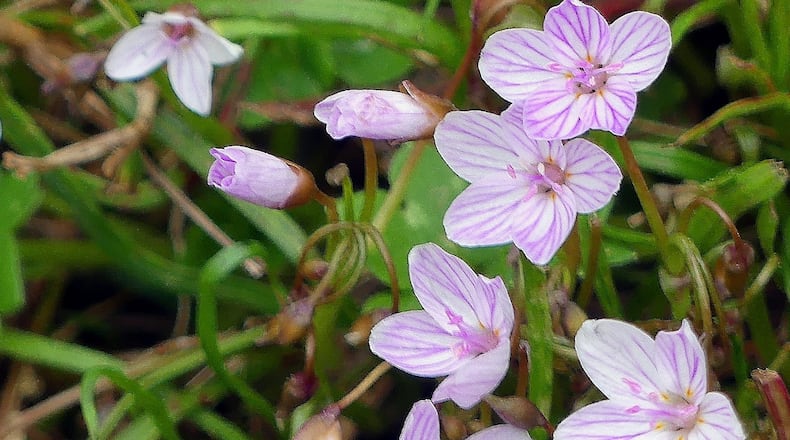Like my favorite bird-watching spots, I have my favorite wildflower “hot spots” — places where I know I can go to see a variety of early spring wildflowers in lush, colorful bloom.
The hot spots are found all over Georgia in diverse habitats — pine and hardwood forests, meadows, wetlands, streambanks, mountain ridges and coves, granite outcrops and others. For various reasons (such as their soil), they harbor an array of spring wildflowers of nearly every hue of the rainbow.
Between now and the end of April, these wildflower havens will be in full splendor — remarkably transformed from a dull winter brown into an early spring landscape of breathtaking color. As I do every year, I try to make the rounds of as many of these wildflower hot spots as I can.
On Saturday, in fact, several of us Georgia Botanical Society members will visit what many folks regard as the best early spring wildflower walk in Georgia — the Shirley Miller Wildflower Trail in the Crockford-Pigeon Mountain Wildlife Management Area in Walker County. For us, a trek along the boardwalk trail there has become an annual rite of spring.
We expect to see an abundance of blooming spring wildflowers such as Virginia bluebell, Dutchman’s-breeches, toothwort, celandine poppy (yellow), spring beauty, rue-anenome, hepatica, several species of violets, bloodroot, trout lily, wild geranium, foamflower, chickweed, trilliums, phacelia, dwarf iris and others.
Many of those species and others also can be seen over the next few weeks along trails in state parks, outdoor nature centers, the Chattahoochee River National Recreation Area, the Chattahoochee National Forest and other wild places across the state. One of my other favorite wildflower places is the Piedmont National Wildlife Refuge near Forsyth in Middle Georgia.
A good wildlife viewing guide for the state is the book “Favorite Wildflower Walks in Georgia” by Hugh and Carol Nourse. In the Atlanta area, the book “Hiking Atlanta’s Hidden Forests: Intown and Out” by Jonah McDonald is helpful.
IN THE SKY: From David Dundee, Tellus Science Museum astronomer: The moon will be full on Sunday — the “Windy Moon,” as the Cherokee peoples called this month’s full moon. It also is called the Full Worm Moon. Mars is in the southwest at dark and sets in the west a few hours later. Mercury, Jupiter and Saturn are in the east before sunrise.
Charles Seabrook can be reached at charles.seabrook@yahoo.com.
About the Author
Keep Reading
The Latest
Featured


